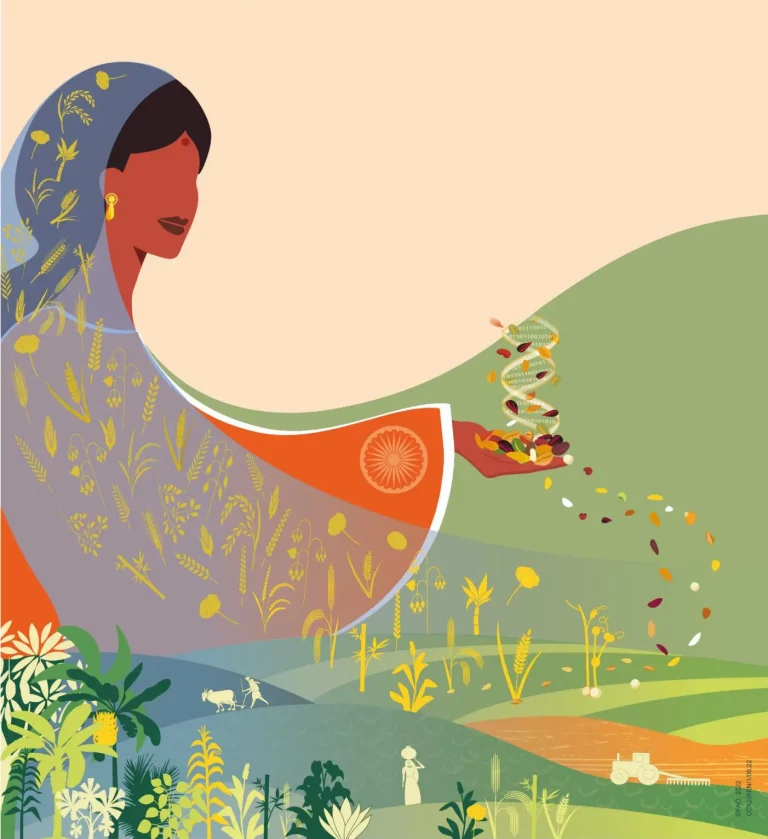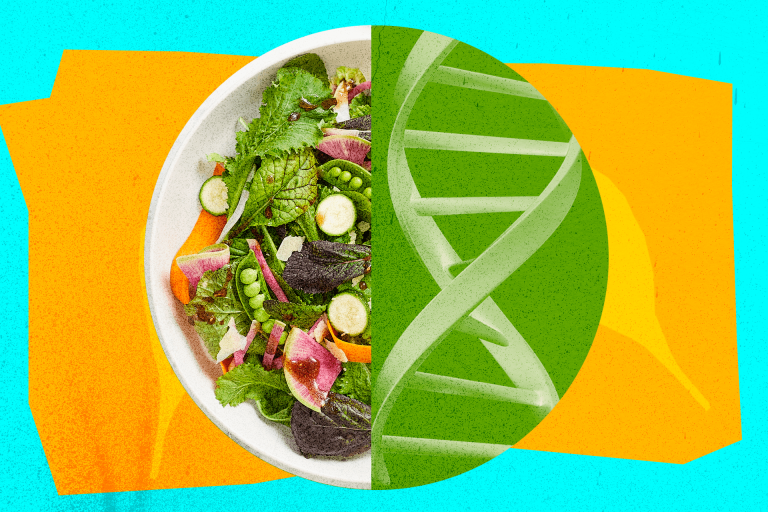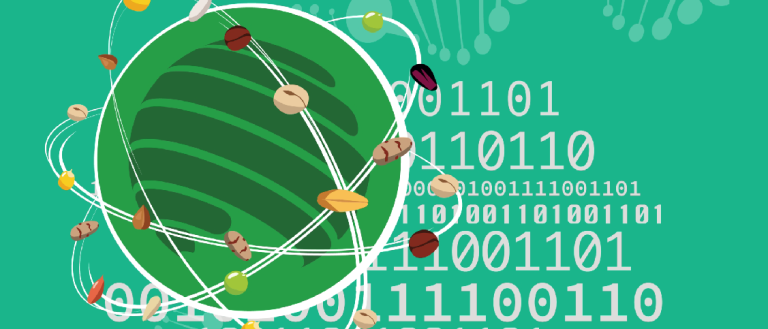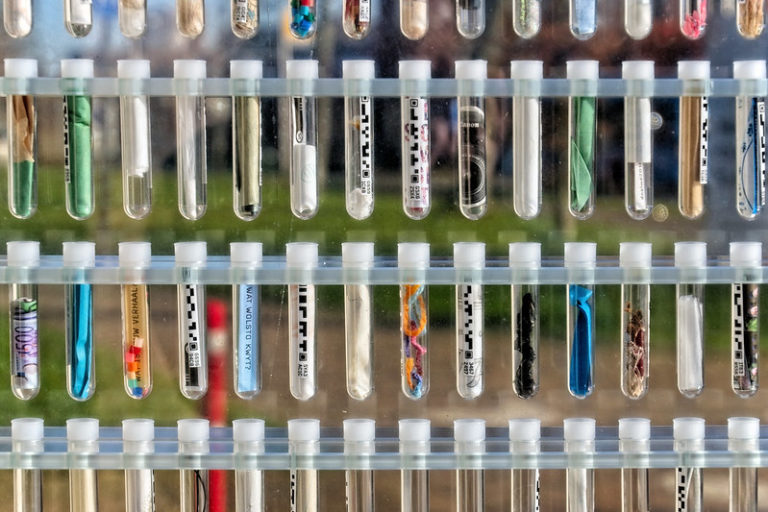Interconnections between new biotechnologies and DSI or GSD
What are the links between new techniques of genetic modification, digitization of genetic sequences information and patents? Inf’OGM publishes here an analysis presented in June 2024 at a regional workshop organized by the African Center for Biodiversity, in Durban (South Africa). It was written by Guy Kastler, representative of the international farmers’ organization La Via Campesina at various ITPGRFA and CBD meetings.

Author’s introductory remark: the explanations on patents developed in this article take as an example the current evolution of GMO regulation in the European Union, which applies equally the agreement on Trade-Related Aspects of Intellectual Property Rights (TRIPS) annexed to the rules of the World Trade Organization (WTO), the International Treaty on Plant Genetic Resources for Food and Agriculture (ITPGRFA), the Convention on Biological Diversity (CBD), the Nagoya and Cartagena Protocols… There may be some nuances with the rules for applying these same international agreements in other countries or regions, but the general principles remain the same. On the other hand, in countries that have not ratified the Cartagena Protocol, such as the United States of America and Canada, the risks of widespread biopiracy denounced in this article are no longer risks, but already a reality.
New biotechnologies, what is it ?
The new biotechnologies are all “modern biotechnologies” as defined by the Cartagena Protocol. The CBD classifies them as “synthetic biology”. The European Commission uses the term “new genomic techniques” or, for plants, “new breeding techniques”. The proliferation of new names with no internationally recognized definition is intended solely to create confusion in order to exclude these techniques from the scope of the Cartagena Protocol, which would then apply only to transgenesis. The same confusion from proliferation of new names applies to so-called “bio-fortified” seeds. There are some rare traditional bio-fortified seeds, but the vast majority are genetically modified.
The industry also wants to exclude from this scope certain products derived from modern biotechnologies, such as RNAi pesticides, vaccines, viruses… because they are not themselves living organisms, even though they are disseminated with the aim of modifying the genome or epi-genome of living organisms. To date, the CBD has not concluded its discussions on this subject.
The genetic information, what is it ?
The gene is not an organism, but it is an essential building block of living organisms. It is made up of nucleic acids, which are tangible chemical molecules. The gene is therefore a physical, tangible substance. Some genes are considered to carry information that determines a particular biological characteristic of the organisms that contain them. Today, we know that the same biological trait often depends on several genes and that, in different contexts, the same gene can generate different traits or no traits at all. But international law doesn’t bother with these subtleties.
Information is not a material substance. Yet genetic information is defined only by its material support, the genetic sequence and the phenotypic character resulting from its expression. Geneticists say that “the gene codes for a protein”, while jurists speak of its “function”. However, this material support can also be dematerialized into computer data, which can travel around the planet and be displayed on computer screens in the form of an ordered succession of 5 letters (A, C, T, G and U), symbolizing the nucleic acids of the DNA or RNA making up the genetic sequences. But these letters alone say nothing about the function of the genetic sequence they represent. This function must be specified elsewhere.
Two new expressions are now overlapping in all international legal debates: digital sequence information (DSI) and genetic sequence data (GSD). But neither has an agreed legal definition to determine whether it refers to the physical genetic sequence, an integral part of physical biological resources, or only to its dematerialized digital representation produced by research.
The genetic information, the Cartagena Protocol and the patents
The first patents on genes were granted in the USA in the 1980s, after much controversy concerning the privatization of living organisms. In 1998, the European Union adopted its Biotech Directive 98/44/EC, according to which (Article 9), “The protection conferred by a patent on a product containing or consisting of genetic information shall extend to all material in which the product in incorporated and in which the genetic information is contained and performs its function”. For the European legislator, genetic information is therefore contained in a product or constitutes the product itself, and can confer an exclusive right to use the materials containing it. Although immaterial, it remains an integral part of these biological materials.
The European directive does not specify that this exclusive right of use is limited solely to materials derived from the technical process justifying the patented invention. It may therefore extend to products derived from traditional or farm breeding which naturally contain genetic information similar in description to that of the genetic information claimed by the patent and expressing its function. To date, only the Cartagena Protocol has limited the risk of abusive extension of the scope of such patents to “native traits”. Its Annex II e) requires the disclosure of “any unique identification” of LMOs (Living Modified Organisms) intended for food, feed or processing. A unique identification makes it possible to distinguish the patented LMO from any other product. Consequently, the scope of a patent on a LMO can only extend to that LMO and to products derived from or contaminated by that LMO, and not to the native genes of traditional products. The rich countries that are home to the biggest industrial companies want to remove this obstacle to biopiracy. To this end, they develop a number of fanciful stories claiming that new biotechnologies are not modern biotechnologies in the sense of the Cartagena Protocol.
The patent on the genetic information and the new biotechnologies
While regulatory protocols for the detection and identification of transgenic LMOs have been adopted internationally, the same cannot be said for LMOs obtained through new biotechnologies. All patent holders have the process allowing to identify and prosecute anyone infringing their invention. These processes could meet the Protocol’s obligation of unique identification. But under patent law, they are confidential information protected by industrial secrecy. This confidentiality allows the European Commission to ignore their existence, to claim that nothing is allowing to distinguish GMOs derived from new biotechnologies from organisms derived from traditional techniques not subject to the Protocol’s obligations, and consequently to propose excluding them from the Protocol’s scope of application.
While the numerical description (GSDs) of the single modified gene may not be sufficient to establish this distinction, the same cannot be said of the description of the entire modified organism, with the genetic, epigenetic, molecular and other signatures of the unintended on-target or off-target effects of the genetic techniques used, enabling the organism to be uniquely and indisputably identified. This is why the industry and the European Commission want to limit regulation to the genetic character claimed in the patent, without taking into account the totality of the genetically modified organism.
Reversing the burden of proof
A patent holder can have his competitors’ products seized by the authorities on the sole basis of presumed infringement. It is then up to the alleged infringer to prove that his products were not obtained from the patented invention. He can only do so if he has published in an official document, before the first claim of the patent, that his product already contained the genetic information claimed in the patent, and deposited in an official collection a sample enabling him to prove this. Peasants and small local seed companies do not sequence or deposit in official collections the millions of new seeds they save and select every year. If those seeds naturally contain genetic information described as similar to the one which is patented, only the obligation to publish the LMO’s unique identifier can enable them to prove that they have not copied the patented invention. Excluding new LMOs from the scope of the Cartagena Protocol would remove this obligation and thus legalize biopiracy, in flagrant violation of the rights of peasants and indigenous peoples enshrined in the ITPGRFA and the United Nations Declaration on the Rights of Peasants (UNDROP).
2014: ITPGRFA collides with the patent on genetic information
In July 2014, the ITPGRFA held a ceremony dedicated to the 10th anniversary of its entry into force. Its Secretary, Shackel Batthi, announced on this occasion that he had signed the Treaty’s commitment to the new program, DivSeek, designed to publish in open access on the Internet the genetic sequences of the two million seed samples stored in the genebanks made available to the Treaty’s Multilateral System of Access and Benefit Sharing (MLS).
The full sequencing of the first plant, rice, which began in 1993 in Japan, was only completed 12 years later, in 2005, one year after the the Treaty was signed. It mobilized hundreds of researchers from 11 different countries and millions of dollars. In 2014, sequencing a plant sample already required just a few days and a few dozen dollars. Today, it is fully automated, takes just one or two days, depending on the precision required, and costs just a few dollars.
This observation enabled the La Via Campesina representative to respond to Shackel Batthi, who was expecting compliments, by denouncing his initiative instead: “with the evolution of techniques, the linkage of genetic and phenotypic data of plant genetic resources facilitates the filing of patent applications on plant traits, including so-called ‘native’ traits that already exist in nature. Such patents enable the private appropriation of these resources. They herald the death of the facilitated access that underpins the Multilateral System. They also herald the end of the rights of peasants, who can no longer use or exchange their own seeds when a patent is registered on a gene that is already present naturally, or when they are contaminated by patented genes”.
Access to plant genetic resources for food and agriculture (PGRFA) under the MLS is “facilitated”, meaning that it is exempt from any bilateral agreement between provider and recipient. It is not, however, free, as it remains linked to a benefit-sharing obligation and a prohibition on claiming any patent on the resource supplied, its parts or its genetic components (article 12.3.d of the Treaty). DivSeek’s free Internet access to the genetic sequences of these resources therefore constitutes a breach of the Treaty. Shackel Batthi made a serious mistake in committing the Treaty to the DivSeek program, and moreover without seeking the agreement of its Board of Directors. He lost his position two years later and promptly returned to his former employer, the World Intellectual Property Organization (WIPO), which he had in fact never ceased to serve.
In 2017, the new concept of DSI appeared on the agenda of the Treaty’s Governing Body. The lack of traceability of the origin of patented DSI enables industry to claim that it has not used any PGRFA from the MLS. This exempts the industry from any benefit-sharing obligations and any prohibition on patenting the genetic components of PGRFA, and from extending the scope of such patents to “native” or traditionally-bred seeds containing the same DSI. This triggered heated debate between, on the one hand, the countries of the Global South and the peasants who are the main suppliers of PGRFA, who consider that DSI are genetic resources subject to the obligations of the Treaty, and, on the other hand, the rich countries of the Global North, who consider that DSI are products of research not subject to these obligations. This debate is still ongoing.
DSI and new biotechnologies to produce new patents?
A genetic sequence alone cannot be patented unless it is the result of a patentable invention, such as the new biotechnologies, and without indicating its function, which is the phenotypic character resulting from its expression. With the dematerialization of PGRFAs, benefit sharing becomes the main tool for determining these functions.
Facilitated access to MLS’ PGRFA eliminates any possibility of bilateral agreement between the peasants who supplied their seeds and the beneficiary. This is why the Treaty has set up a multilateral Benefit-Sharing Fund, financed almost exclusively by a handful of States, well below the amounts that should be paid by the industry, which refuses to meet its obligations beyond a few rare alms. This Fund does not remunerate the peasants who supplied their PGRFA to the MLS, but rather the national seed banks of developing countries, followed by researchers and NGOs who collect new PGRFA selected by the farmers, as well as their knowledge associated with these PGRFA. Access to funding from the Benefit Sharing Fund obliges these national seed banks, researchers and NGOs to deposit these PGRFA in MLS collections and to publish the associated knowledge, which constitutes the functions of the genetic sequences they contain.
DivSeek and other similar programs now offer free access to several billion of PGRFA’s genetic, epigenetic and protein sequences. Scientific publications, NGOs’ publications and those of the Treaty’s information system enable the creation of databases of traits associated with each PGRFA. The powerful computing search engines of a few industry majors are now capable of processing millions of data to identify which genetic sequence in a PGRFA sample “codes” for which function. All they have to do is mobilize their geneticists to tell the story of how to introduce this genetic information into laboratory varieties by means of a new patentable biotechnology, and then their lawyers to translate this geneticist’s tale into the legal language of a patent application for plants containing this genetic information. They can then announce new promises to solve all actual agricultural and food problems, while at the same time prohibiting their competitors from using the biotechnology and genetic information patented in this way, or requiring them to pay substantial licensing fees.
Only after this first step do they attempt to introduce genetic information into their elite commercial varieties. But this second stage is rarely successful, because the real living world does not operate according to the laws of dematerialized artificial intelligence. It does not obey the probability calculations of computing modelling, which defined the patented genetic information and then programmed the technical process to insert it into real plants. Only a handful of random successes have made it possible to develop new seeds from these new biotechnologies and bring them to market. This difficulty in making the transition from the virtual world of artificial intelligence to the real living world is the reason of the gap between the thousands of patents and publications on new GMOs and the few plants already on the market. However, this does not prevent these patents from fuelling the exponential acceleration of the concentration of the seed industry in the hands of the world’s four or five major seed companies, which hold the largest portfolios. Most of these major seed companies are also chemists, and some are pharmacists, who are also investing in new “bio-control” pesticides, medicines, veterinary products, micro-organisms and robotized animals… derived from the same new biotechnologies.
What solutions ?
In the absence of funding for its Benefit Sharing Fund, the Treaty set up a working group in 2013 to improve its functioning. Following systematic blockages by the industry and the few wealthy countries that support it, it suspended it in 2019, awaiting a possible solution proposed by the CBD.
To date, the CBD has still not reached agreement on the definition of DSI. Instead, it has added the new, also undefined concept of “genetic sequence data”. It did, however, raise the possibility of replacing bilateral benefit-sharing with a multilateral fund financed by a levy on any commercialization of products derived from the use of DSI from biological resources. However, it did not explain how it would identify such use. Industry will still be able to circumvent its payment obligations by claiming patents not on genetic information from biological resources (DSI/GSD), but on biological materials obtained by chemical or genetic synthesis, as it has long been the case for chemically synthesized copies of natural substances, which make up many patented medicines.
In early 2023, ITPGRFA re-established its working group on the MLS’ functioning. The CBD’s proposal leads it to favor a levy on all seed sales by companies using MLS access (subscription), without however excluding optional recourse to its current totally inefficient system of payment for the marketing of products resulting from the use of MLS PGRFA only (single access). This mechanism will spare large companies that only use their own collections and/or public collections that are still open access, such as those in the USA. What’s more, unlike the CBD, which is constrained only by a benefit-sharing obligation, the Treaty also prohibits any patenting of the genetic components of MLS PGRFA. If ever finalized, the CBD solution, which does not take this prohibition into account, will therefore not be sufficient on its own to comply with the Treaty.
Wouldn’t it be simpler to admit that the huge investments in new biotechnologies aim solely at the profits to be made from patents, and offer no solution to actual food, social, climatic, health and environmental challenges… which, on the contrary, they are likely to exacerbate? Wouldn’t the solution be to ban all patents on living organisms?














